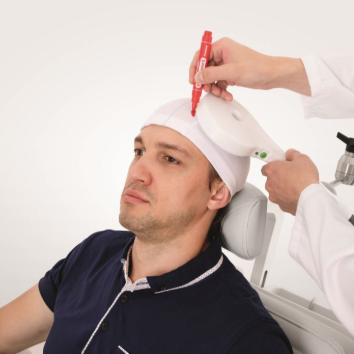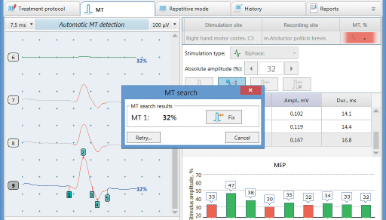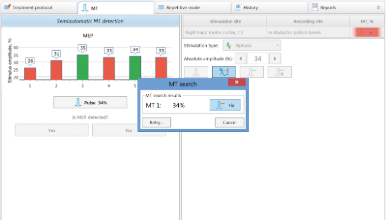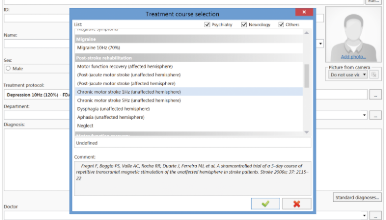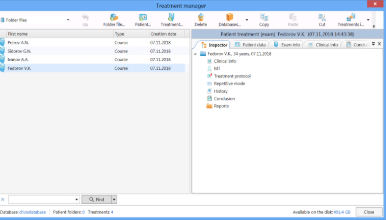Rehabilitation after Stroke
Neuro-MSX
- proved effectiveness for rehabilitation in movement disorders*
- non-invasive and painless procedure
- reliable solution for everyday intensive work
- pre-defined treatment protocols
- breakthrough cooling system
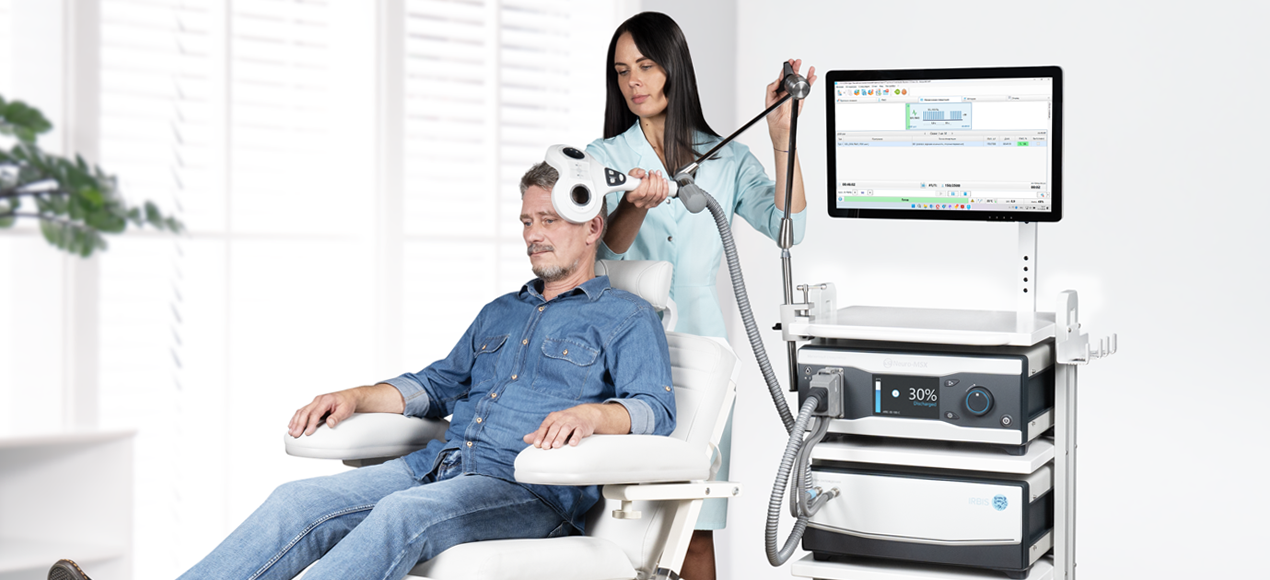
Description
Proved effectiveness for rehabilitation in movement disorders
Transcranial magnetic stimulation (TMS) is a valuable diagnostic and therapeutic technique recommended for wide application in neurorehabilitation of patients with different disorders.
TMS can be used for recovery of motor function after spinal (injury, myelitis) or hemispherical (stroke, injury, etc.) condition.
Application: stroke, spasticity, pain, migraine, Parkinson disease, tinnitus, dystonia, essential tremor, Tourette syndrome, amyotrophic lateral sclerosis, multiple sclerosis, epilepsy, Alzheimer disease.
Non-invasive and painless procedure
If compared to electrical stimulation, transcranial magnetic stimulation does not cause painful sensations that usually occur due to activation of skin receptors under the electrode and does not require additional preparation time. At that, session lasts from just 40 seconds to 30 minutes depending on the selected protocol.
Reliable solution for everyday intensive work
Neuro-MSX magnetic stimulators ensure deep focused stimulation of the brain providing long-term therapeutic effect.
Neuro-MSX is not only ultimate effectiveness but a carefully thought-out performance. Neurosoft magnetic stimulators are popular choice of healthcare professionals across the world — those who value reliability, safety and time.
Pre-defined treatment protocols
Purchasing Neuro-MSX magnetic stimulator, you get the advanced software with the set of pre-defined protocols for treatment of neurological and psychiatric disorders according to the International Federation of Clinical Neurophysiology (IFCN) recommendations. Enhanced software functionality allows you to save considerable time when performing TMS.
Breakthrough cooling system
Several thousands of pulses are usually delivered within one treatment session. The delivery of a large number of pulses may lead to coil overheating, that is why it’s important to ensure timely and effective coil cooling.
Thanks to the breakthrough cooling system, you can perform stimulation using any treatment protocol not wasting time for coil cooling between the sessions.
** Lefaucheur J. P. et al. Evidence-based guidelines on the therapeutic use of repetitive transcranial magnetic stimulation (rTMS): An update (2014–2018) // Clinical Neurophysiology. — 2020.
-

Marking the stimulation spot
-

Аutomatic determination of motor threshold
-

Semiautomatic determination of motor threshold
-

Treatment course selection
-

Treatment manager
Delivery Set
The delivery set can differ from country to country. Request the actual delivery set for your country from your local representative.
| Neuro-MSX main unit | 1 pcs. |
| License for Neuro-MS.NET software | 1 pcs. |
| Irbis cooling unit | 1 pcs. |
| Neuro-MSX extra power supply unit | 1 pcs. |
| AFEC-03-100-C cooled angulated figure-of-eight coil, 100 mm | 1 pcs. |
| HV (high-voltage) cable for Neuro-MSX extra power supply unit connection | 1 pcs. |
| Control cable for Neuro-MSX cooling unit | 1 pcs. |
| End cap for Neuro-MSX | 1 pcs. |
| High-voltage coil connector | 1 pcs. |
| Patient cap (size 37-42) | 10 pcs. |
| Patient cap (size 42-54) | 10 pcs. |
| Patient cap (size 54-66) | 10 pcs. |
| AFEC-03-100-C coil positioning tool | 1 pcs. |
| Silicone oil (canister, 3 l) | 1 pcs. |
| Equipotential cable | 2 pcs. |
| CEE 7/7–IEC C19 mains supply cable | 2 pcs. |
| SCZ-1 mains supply cable | 1 pcs. |
| USB cable (A-B) | 1 pcs. |
| K-3 flexible arm for coil positioning | 1 pcs. |
| K-8 coil holder (trolley/wall mounted) | 1 pcs. |
| T-4/А trolley | 1 pcs. |
| Funnel | 1 pcs. |
| Key for hex drive | 1 pcs. |
| Measuring reel | 1 pcs. |
| Marker pen | 1 pcs. |
| Patient button (USB-3) | 1 pcs. |
| Technical Manual «Neuro-MSX» | 1 pcs. |
| Warranty certificate | 1 pcs. |
| Technical Manual «Coils for Magnetic Stimulators» | 1 pcs. |
| User manual «Neuro-MS.NET (ver.2)» | 1 pcs. |
| Unit package | 1 pcs. |
| Package set for Neuro-MSX main unit and cooling unit | 2 pcs. |
| ''Transcranial Magnetic Stimulation'' handbook by Moacyr Alexandro Rosa and Marina Odebrecht Rosa | 1 pcs. |
Options
-
Michael A. Dimyan et al. Contribution of Transcranial Magnetic Stimulation to the Understanding of Functional Recovery Mechanisms After Stroke. Neurorehabilitation and Neural Repair 24(2) 125–135.
